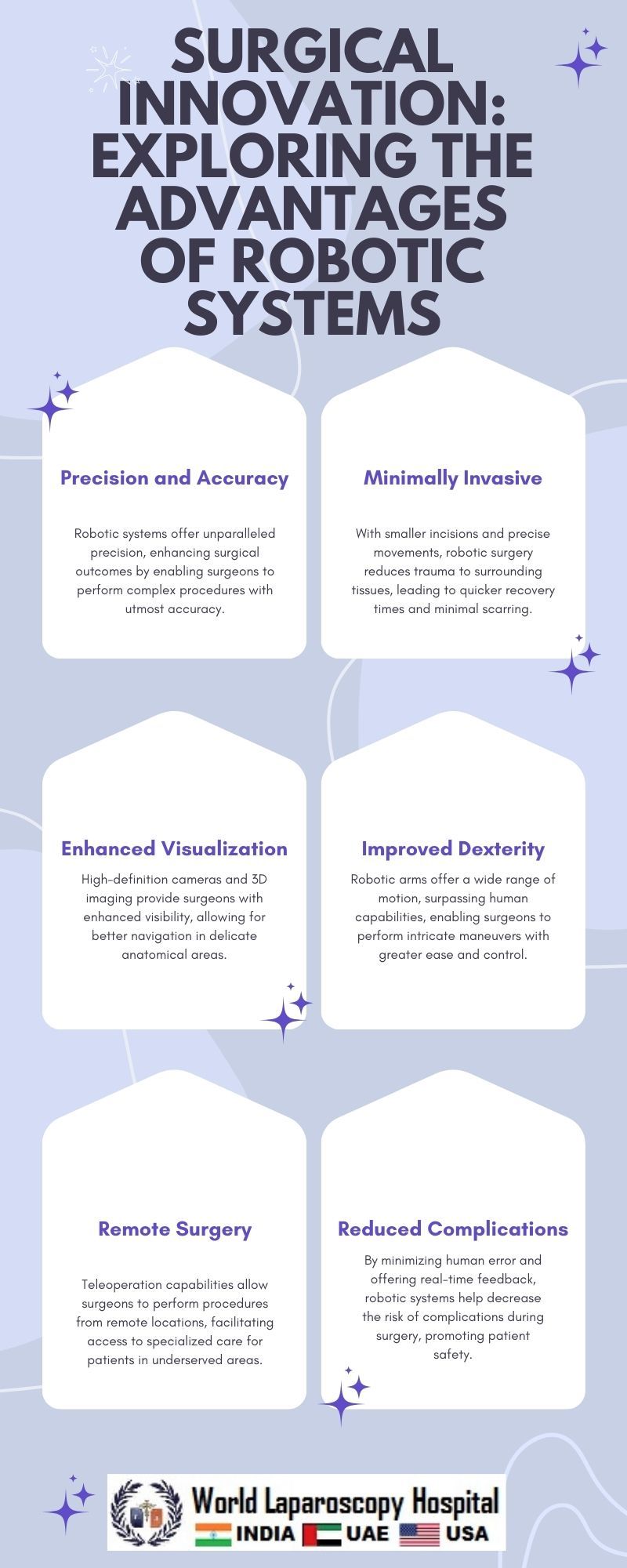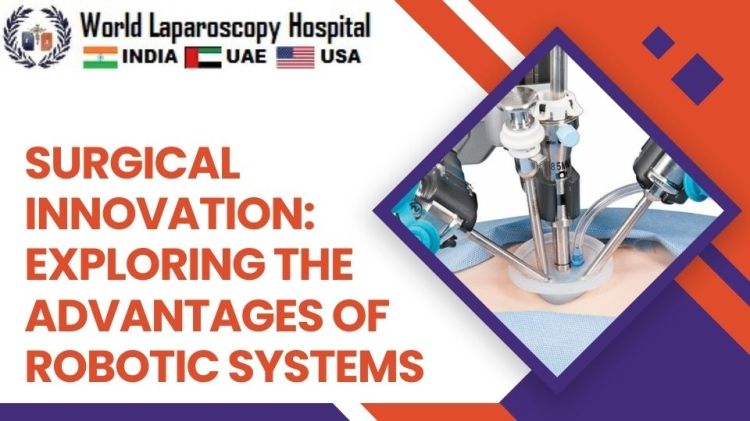Surgical Innovation: Exploring the Advantages of Robotic Systems
Introduction:
Surgical innovation has always been at the forefront of medical advancement, continuously striving to enhance patient outcomes, minimize invasiveness, and improve overall efficiency. In recent years, the integration of robotic systems into surgical procedures has marked a significant leap forward in the field of medicine. These cutting-edge technologies offer numerous advantages over traditional methods, revolutionizing the way surgeries are performed and setting new standards for precision and effectiveness.

This article aims to explore the advantages of robotic systems in surgery, shedding light on their transformative impact on patient care, surgeon capabilities, and healthcare infrastructure.
The Evolution of Robotic Surgery:
Robotic surgery is not a novel concept; its roots can be traced back to the early 1980s when the first robotic-assisted surgical system, PUMA 560, was introduced for neurosurgical procedures. However, it wasn't until the late 1990s that the da Vinci Surgical System, developed by Intuitive Surgical, garnered widespread attention and adoption in various surgical specialties.
The da Vinci system, with its advanced robotic arms and immersive interface, enabled surgeons to perform complex procedures with enhanced dexterity and precision. Over the years, robotic-assisted surgery has evolved significantly, with newer systems incorporating advanced imaging, real-time feedback mechanisms, and artificial intelligence algorithms to further augment surgical capabilities.
Advantages of Robotic Systems in Surgery:
Precision and Accuracy:
Robotic surgical systems offer unparalleled precision and accuracy, allowing surgeons to perform intricate maneuvers with enhanced control and stability. The robotic arms, equipped with miniaturized instruments and high-definition cameras, provide a magnified, three-dimensional view of the surgical site, enabling precise tissue dissection, suturing, and manipulation. This precision translates into superior surgical outcomes, reduced complications, and shorter recovery times for patients.
Minimally Invasive Approach:
One of the most significant advantages of robotic surgery is its minimally invasive nature. Unlike traditional open surgeries that require large incisions, robotic-assisted procedures involve small incisions through which the robotic arms and instruments are inserted. This minimally invasive approach results in less trauma to surrounding tissues, reduced blood loss, and faster postoperative recovery. Patients undergoing robotic surgery experience less pain, scarring, and risk of infection, leading to improved overall satisfaction and quality of life.
Enhanced Visualization:
Robotic surgical systems provide surgeons with unparalleled visualization of the operative field. The high-definition cameras and magnified views offer detailed insights into anatomical structures, allowing for precise identification of critical landmarks and pathology. Moreover, some robotic platforms offer advanced imaging modalities such as fluorescence imaging and augmented reality, further enhancing surgical navigation and tissue differentiation. Improved visualization not only facilitates safer and more accurate procedures but also enables surgeons to perform complex surgeries with confidence and efficiency.
Ergonomic Design and Comfort:
Traditional open surgeries often require surgeons to maintain prolonged, physically demanding positions, leading to fatigue and musculoskeletal injuries. In contrast, robotic systems are designed to prioritize surgeon comfort and ergonomics. The console-based interface allows surgeons to perform procedures while seated in a comfortable position, with ergonomic hand controls and foot pedals for instrument manipulation. This ergonomic design reduces surgeon fatigue, enhances concentration, and minimizes the risk of repetitive strain injuries, ultimately prolonging surgical careers and improving overall workforce sustainability.
Telemedicine and Remote Surgery:
With advancements in telecommunications and robotic technology, remote surgery has emerged as a promising application of robotic systems. Through telepresence and telesurgery capabilities, expert surgeons can remotely supervise or directly perform procedures in distant locations using robotic platforms. This opens up new possibilities for providing specialized care to underserved areas, facilitating medical education and training, and enabling collaborative surgical interventions between geographically dispersed teams. Remote surgery holds immense potential for expanding access to high-quality surgical care and addressing disparities in healthcare delivery worldwide.
Faster Recovery and Shorter Hospital Stays:
The minimally invasive nature of robotic surgery results in faster recovery times and shorter hospital stays compared to traditional open procedures. Patients undergoing robotic-assisted surgeries experience less pain, reduced risk of complications, and quicker return to normal activities. Moreover, the precise tissue manipulation and minimal trauma associated with robotic surgery contribute to accelerated wound healing and overall recovery. Shorter hospital stays not only lower healthcare costs but also free up hospital resources, allowing for more efficient utilization of healthcare facilities and better patient throughput.
Challenges and Future Directions:
While robotic surgery offers numerous advantages, it is not without its challenges and limitations. The high initial cost of robotic systems, ongoing maintenance expenses, and the learning curve associated with mastering robotic techniques pose barriers to widespread adoption. Additionally, concerns regarding patient safety, operator proficiency, and ethical considerations surrounding remote surgery require careful consideration and regulatory oversight.
Looking ahead, ongoing advancements in robotic technology, artificial intelligence, and human-machine interfaces are poised to further enhance the capabilities and accessibility of robotic-assisted surgery. Future innovations may include autonomous robotic systems capable of learning from surgical data, customizable robotic platforms tailored to specific surgical specialties, and integration with advanced imaging and navigation technologies for enhanced procedural guidance.
Conclusion:
Robotic systems have revolutionized the field of surgery, offering unparalleled precision, minimally invasive approaches, and enhanced capabilities for surgeons. From improved patient outcomes and faster recovery times to expanded access to specialized care and remote surgical interventions, the advantages of robotic surgery are manifold. As technology continues to evolve and barriers to adoption are addressed, robotic-assisted surgery is poised to become the standard of care across diverse surgical specialties, ushering in a new era of innovation and excellence in patient care.



